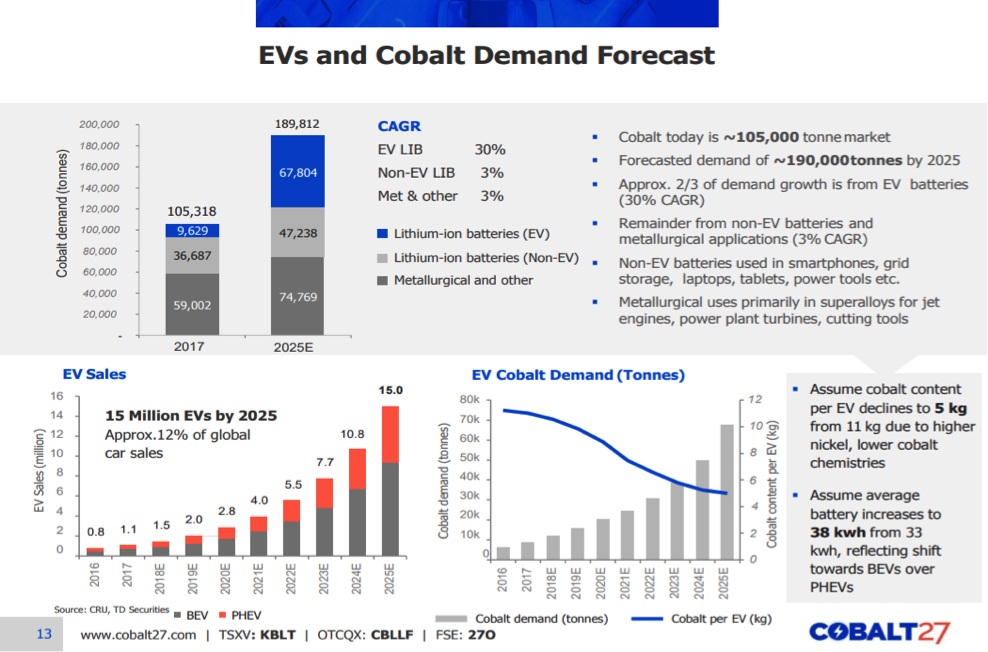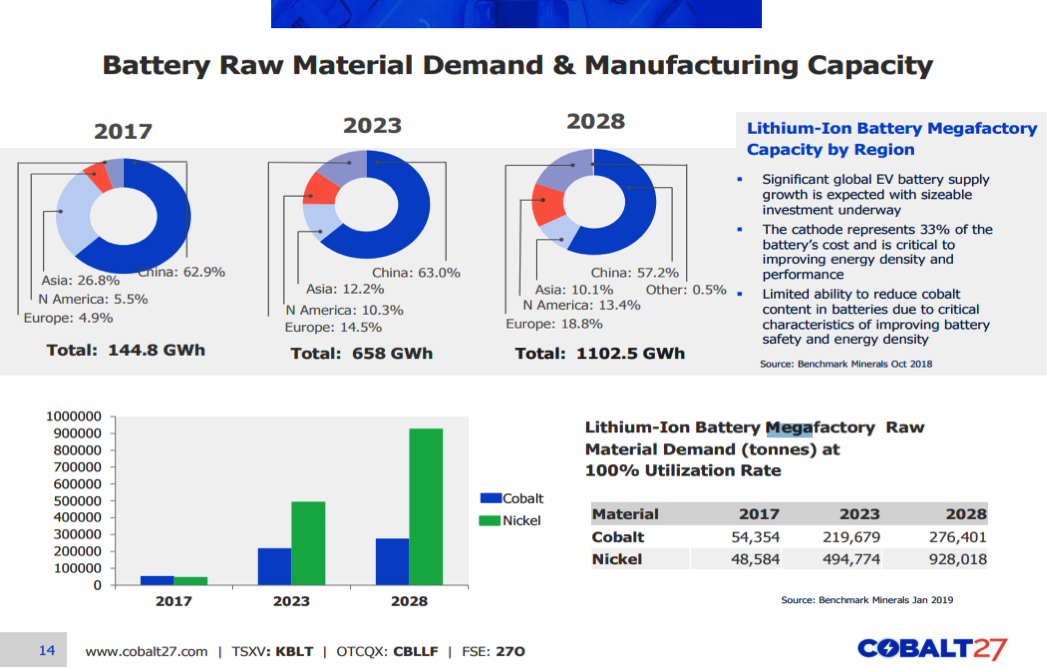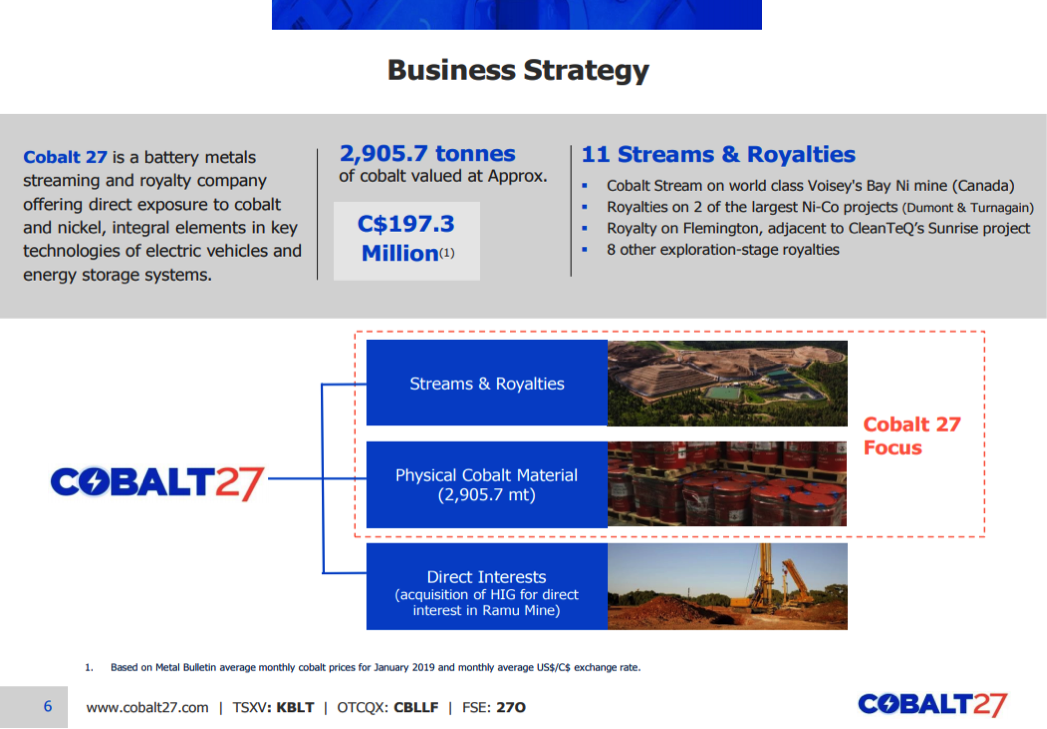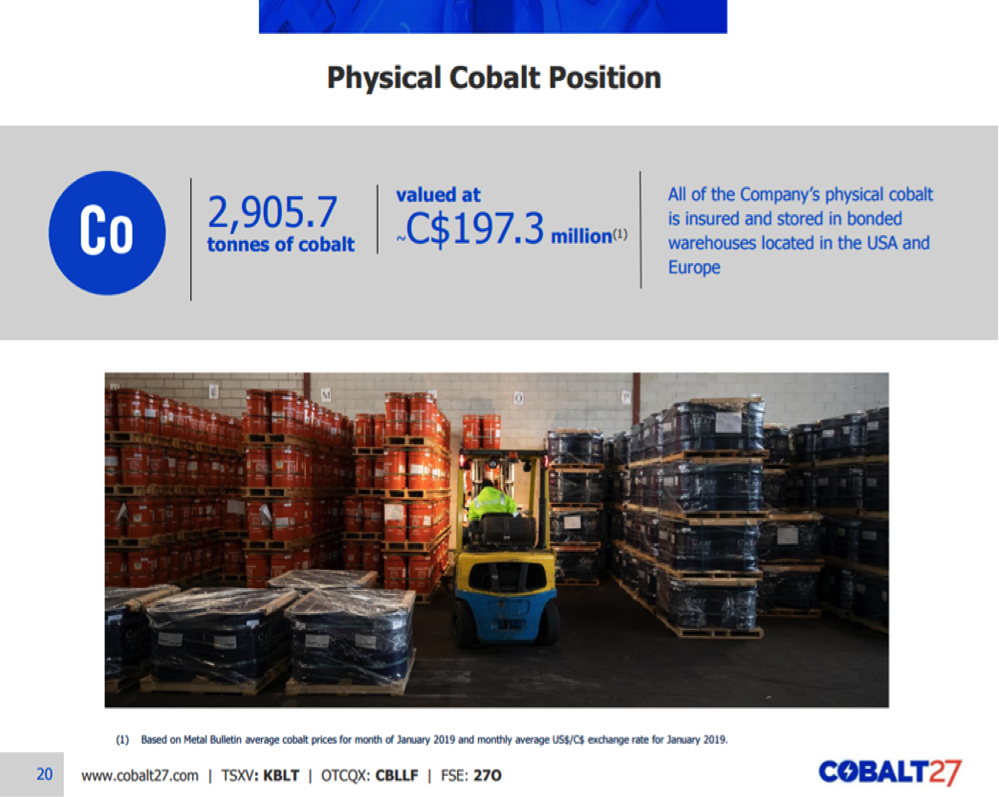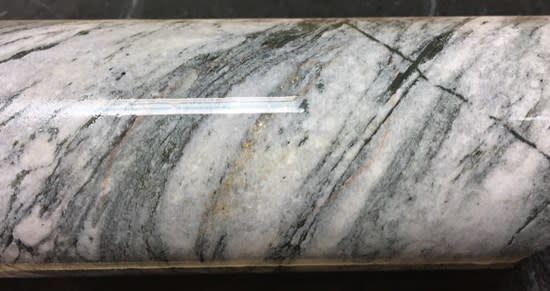April 2, 2019
Vancouver, British Columbia, April 2, 2019 (TSX Venture: EMX; NYSE American: EMX) – EMX Royalty Corporation (the “Company” or “EMX”) is pleased to report results for the year ended December 31, 2018. All dollar amounts are CDN unless otherwise noted.
HIGHLIGHTS FOR 2018
Financial Update
EMX had royalty revenue of $2.1 million generated in North America and Turkey during the year. The Company also received $2.1 million in property payments, and $1.1 million from the sale of marketable securities.
The Company’s net income for the year was $62.1 million, which principally resulted from an $80.3 million gain from the sale of the Malmyzh project by IG Copper LLC (“IGC”).
Royalty generation costs totaled $8.1 million, of which $1.9 million was recovered from partners. In addition, partners continued to advance projects and incur exploration expenditures totaling approximately $19 million that did not flow through to the Company’s financial statements.
General and administrative expenses totaled $4.1 million, which includes $1.1 million in salaries and consultants, $0.8 million in administrative costs, and $1.0 million in share-based payments.
Total cash used in operations was $5.9 million. Other items affecting financial results in 2018 include an impairment of $7.2 million at the Leeville royalty property in Nevada, $1.7 million in depletion costs, $1.9 million loss related to reduction in goodwill, foreign exchange gain of $3.5 million, and discretionary bonuses of $5.2 million related to the successful sale of Malmyzh (as discussed below).
Sale of Malmyzh Strategic Investment
After seven years, EMX’s strategic investment in IGC was realized in 2018 through the sale of the Malmyzh copper-gold project to Russian Copper Company (“RCC”) for US$200 million (see EMX news releases dated October 11, and October 30, 2018).
EMX received an initial cash distribution of $84.2 million from IGC in Q4 of 2018. Subject to certain escrow conditions related to the sale of Malmyzh, cash distributions of up to $5.5 million will be made to EMX as funds are released during 2019.
The Company awarded bonuses totaling $5.2 million to the Chairman, and all EMX management and staff, in recognition of the seven year effort to identify, develop and monetize the Company’s investment in IGC. The bonuses were approved by the Compensation Committee comprised of three independent directors and the Board, with Michael Winn and Dave Cole abstaining given their participation in the bonuses (see EMX news release dated November 30, 2018).
Operational Update
The Company’s royalty and mineral property portfolio totals over 90 projects on five continents.

In North America, EMX received ~$1.84 million in gross revenue from the sale of 1,116 ounces of gold from the Leeville royalty property that covers portions of Newmont Mining Corporation’s (“Newmont”) underground mining operations on the Northern Carlin Trend. Additionally, EMX executed a strategic alliance with South32 USA Exploration Inc. (“South32″) to evaluate exploration opportunities in Arizona, New Mexico, and Utah, executed another property agreement with Kennecott Exploration Company in Arizona, and saw further advances on its portfolio where partners spent approximately $7.0 million on exploration.
In Turkey, the Company received pre-production payments totaling $1.65 million related to the Akarca royalty property where engineering, metallurgical, and other project studies were advanced during the year. At the Balya royalty property, EMX received pre-production royalty payments totaling $133 thousand, and the operator continued to expand drill defined zones of lead-zinc-silver mineralization through an ongoing ~24,000 meter drill program. At the Sisorta gold royalty property, EMX received pre-production royalty payments totaling $145 thousand, and the operator continued to advance the property, having submitted an Environmental Impact Assessment study.
In Serbia, Nevsun Resources Ltd. (“Nevsun”) announced significant advancements at the Timok Project royalty property, including: a) an updated high grade Upper Zone Pre-Feasibility Study (“PFS”) that outlined a 10 year mine life yielding approximately 1.7 billion pounds of payable copper and 516 thousand ounces of payable gold, with initial production forecast to be in 2022, b) commencement of an Upper Zone exploration decline, and c) an initial inferred resource for the Lower Zone porphyry project of 1.7 billion tonnes averaging 0.86% copper and 0.18 g/t gold at a “dollar equivalent” cut-off of US$25/tonne (see Nevsun news releases dated March 28, June 5, and June 26, 2018). In Q1 2019, the acquisition of Nevsun was completed by Zijin Mining Group Co. Ltd.
In Scandinavia, the Company completed nine transactions, including four with Boreal Metals Corp. (“Boreal”), four with Norra Metals Corp (“Norra”), and one with South32 Ltd. The deals with Boreal and Norra involved receiving equity in Boreal and Norra, advance royalty payments, and a 3% NSR royalty interest in the projects, while the South32 agreement involved cash payments, work commitments, and upon earn-in, a 3% NSR royalty interest. Boreal also announced drill results at Gumsberg in Sweden, where high grade zinc-lead-silver massive sulfide mineralization was encountered (see EMX news releases dated March 1 and May 2, 2018).
In Australia, the Company acquired a prospective sediment hosted copper exploration project in the Kimberley region of Western Australia. The Company made a decision to relinquish all properties in New Zealand during the year.
OUTLOOK
The Company enters 2019 with a strong balance sheet, including working capital of $89 million comprised of $86.2 million in cash, $1.5 million in investments, $7.5 million in receivables, and $5.7 million in payables. EMX intends to operate the business as we have for the past 16 years, generating and marketing new royalty opportunities. The Company will also continue to selectively evaluate royalty acquisitions and strategic investments as we have in the past. EMX’s business model of royalty generation, royalty acquisition, and strategic investment provides multiple avenues for growing the Company’s portfolio and building shareholder value.
Despite the impairment of the Leeville royalty this past year, the Company continues to be optimistic about the potential to increase future revenue from this royalty. Newmont’s exploration successes extend southeast from the Leeville mining complex and across EMX’s royalty position. As discussed by Newmont, this trend is an important contributor to its Northern Carlin Trend development strategy. The upside exploration potential of the Leeville royalty property, coupled with a positive outlook for the gold price, underscores the upside optionality of this material Company asset.
We are also excited about the potential growth in revenue that may come from our Turkish portfolio (Balya, Akarca, and Sisorta), as well as the significant potential of our Timok royalty in Serbia, where the Upper Zone high grade copper-gold development project is scheduled to commence production in 2022. The Timok royalty is a material Company asset.
EMX continues to see strong industry interest in the Company’s royalty generation properties. More than $20 million is expected to be spent by partners advancing EMX’s portfolio during 2019. A majority of this portfolio to be explored is in the southwest U.S., Sweden and Norway. EMX will also continue to evaluate royalty acquisition and strategic investment opportunities within the regions where we currently operate, while looking for new opportunities to grow the portfolio elsewhere in the world.
The overarching goal to sustain the Company’s royalty generation, royalty acquisition, and strategic investment activities with positive cash flow was realized in 2018 with the Malmyzh sale. In addition, ongoing revenue from royalties, advance royalties and other pre-production cash payments have been increasing over time. Going into 2019, EMX is well funded to identify new strategic investment opportunities, while developing a pipeline of quality royalty and royalty generation mineral properties that provide multiple opportunities for exploration and production success.
FILING OF FORM 20F
The Company has filed a Form 20-F annual report, including the Company’s audited consolidated financial statements (the “Financial Statements”) and Management’s Discussion and Analysis, for the year ended December 31, 2018 with the U.S. Securities and Exchange Commission (the “SEC”) on EDGAR (www.sec.gov) and with Canadian securities regulators on SEDAR (www.sedar.com). The annual report is also available for viewing on the Company’s website at www.EMXroyalty.com under the heading “Investors”. Shareholders may receive a printed copy of the Company’s complete Financial Statements, or its complete Form 20-F, free of charge, upon request to the Corporate Secretary at Suite 501 – 543 Granville Street, Vancouver, British Columbia V6C 1X8, Canada.
About EMX. EMX leverages asset ownership and exploration insight into partnerships that advance our mineral properties, with EMX receiving pre-production payments and retaining royalty interests. EMX complements its royalty generation initiatives with royalty acquisitions and strategic investments. Please see www.EMXroyalty.com for more information.
Mr. Dean D. Turner, CPG, a Qualified Person as defined by National Instrument 43-101 and consultant to the Company, has reviewed, verified and approved the disclosure of the technical information contained in this news release.
For further information contact:
David M. Cole
President and Chief Executive Officer
Phone: (303) 979-6666
Email: Dave@EMXroyalty.com
Scott Close
Director of Investor Relations
Phone: (303) 973-8585
Email:SClose@EMXroyalty.com
Neither the TSX Venture Exchange nor its Regulation Services Provider (as that term is defined in policies of the TSX Venture Exchange) accepts responsibility for the adequacy or accuracy of this release.
Forward-Looking Statements
This news release may contain “forward looking statements” that reflect the Company’s current expectations and projections about its future results. These forward-looking statements may include statements regarding perceived merit of properties, exploration results and budgets, mineral reserves and resource estimates, work programs, capital expenditures, timelines, strategic plans, market prices for precious and base metal, or other statements that are not statements of fact. When used in this news release, words such as “estimate,” “intend,” “expect,” “anticipate,” “will”, “believe”, “potential” and similar expressions are intended to identify forward-looking statements, which, by their very nature, are not guarantees of the Company’s future operational or financial performance, and are subject to risks and uncertainties and other factors that could cause the Company’s actual results, performance, prospects or opportunities to differ materially from those expressed in, or implied by, these forward-looking statements. These risks, uncertainties and factors may include, but are not limited to: unavailability of financing, failure to identify commercially viable mineral reserves, fluctuations in the market valuation for commodities, difficulties in obtaining required approvals for the development of a mineral project, increased regulatory compliance costs, expectations of project funding by joint venture partners and other factors.
Readers are cautioned not to place undue reliance on these forward-looking statements, which speak only as of the date of this news release or as of the date otherwise specifically indicated herein. Due to risks and uncertainties, including the risks and uncertainties identified in this news release, and other risk factors and forward-looking statements listed in the Company’s MD&A for the year ended December 31, 2018 (the “MD&A”), and the most recently filed Form 20-F for the year ended December 31, 2018, actual events may differ materially from current expectations. More information about the Company, including the MD&A, the 20-F and financial statements of the Company, is available on SEDAR at www.sedar.com and on the SEC’s EDGAR website at www.sec.gov.
Irving Resources, etc.
I often wonder what the world would be like in the future.
I have written and spoken a lot about why the Third World (with the exception of China), erroneously known as “emerging markets”, is on its way back to the dark ages. These people representing 5 billion out of 7.5 billion human beings will fall into tribal units and then enter never-ending wars.
The West is stumbling. Cultural Marxism, an infiltration of the Third World ways—begging for free-stuff, sense of entitlements, etc.—have increasingly become mainstream in the West.
Today, one out of four Australians is an immigrant. Among the millennial, the US is rapidly becoming, and perhaps already has, a non-European majority country. This matters. One only has to look at how those from non-European background vote to understand that six years now, it will be virtually impossible for a person like Trump to win again. The wide chasm that exists between those who prefer liberty, freedom, free-markets and self-responsibility, and those who don’t means that at a certain point of time, in a not too distant future, the US will take a sharp turn left. The turn will be sharp, given the chasm.
That leaves Japan, Korea, Taiwan, Hong Kong, Singapore and possibly China as the only societies where the western civilization might survive. For now, it is thriving:
Cory Fleck and I discussed three companies. They are all worth keeping a very close eye on. Irving Resources (IRV; C$1.90) has started drilling its very prospective project. Evrim Resources (EVM; C$0.30) is trading at the value of its cash and royalty ownership, offering a free upside on its projects and management capabilities. Core Gold (CGLD; C$0.24) has a massive arbitrage upside, but there are several unknown risks involved. The talk is linked here.
On other matters…
I am happy to announce that Fergus Hodgson will be speaking on the “Painful Truths about Latin America” at the next Capitalism & Morality. I am very fond of his deep understanding of Latin America. You can subscribe to his letter here.
I will be speaking at Mining Investment Asia in Singapore later this month.
Warm regards,
Jayant Bhandari
Associate: Rajni Bala
Disclaimer: All information found here, including any ideas, opinions, views, predictions, forecasts, commentaries, suggestions, or stock picks, expressed or implied herein, are for informational, entertainment or educational purposes only and should not be construed as personal investment advice. While the information provided is believed to be accurate, it may include errors or inaccuracies. The sole purpose of these musings is to show my thinking process when analyzing a stock, not to provide any recommendation. I will not and cannot be held liable for any actions you take as a result of anything you read here. Conduct your own due diligence, or consult a licensed financial advisor or broker before making any and all investment decisions. Any investments, trades, speculations, or decisions made on the basis of any information found on this site, expressed or implied herein, are committed at your own risk, financial or otherwise.









